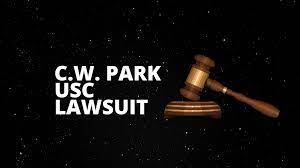The OIG Exclusion List Explained: Key Insights into LEIE
The healthcare landscape is marked by its dedication to providing quality services and ensuring the well-being of patients. Amidst these noble pursuits, the Office of Inspector General (OIG) Exclusion List, or the List of Excluded Individuals and Entities (LEIE), emerges as a critical instrument in upholding the integrity of healthcare programs. Created and maintained by the U.S. Department of Health and Human Services (HHS), the LEIE serves as a guardian against potential threats posed by individuals or entities with a history of healthcare fraud, patient abuse, or related offenses. Understanding the profound impact of the LEIE is indispensable for healthcare providers, administrators, and organizations committed to maintaining the highest standards of care and compliance.
In this article, we delve into key insights about the LEIE, shedding light on its significance and implications for individuals and entities involved in healthcare services.
What is the LEIE?
The OIG Exclusion List, managed by the U.S. Department of Health and Human Services (HHS), identifies individuals and entities excluded from participating in federal healthcare programs. Exclusions occur due to convictions for healthcare fraud, patient abuse, or related offenses. Understanding the LEIE is crucial for healthcare providers, as engaging with excluded entities can result in severe penalties.
Length and Scope of Exclusions
Exclusions listed on the LEIE vary in duration, ranging from a few years to permanent exclusion. The scope encompasses healthcare professionals, suppliers, and service providers involved in Medicare, Medicaid, and other federally funded programs. Checking the LEIE regularly is essential to ensure compliance and avoid unintended interactions with excluded parties.
Implications for Employers and Providers
For employers and healthcare providers, hiring or contracting with an excluded individual or entity can lead to significant consequences. This jeopardizes federal program reimbursements, and it may also result in civil monetary penalties. Performing thorough background checks on employees and contractors is a proactive measure to prevent unintentional violations.
How to Access the LEIE?
Accessing the LEIE is a straightforward process, crucial for maintaining compliance. The OIG provides an online database that allows users to search for individuals or entities on the exclusion list. Healthcare organizations are encouraged to integrate regular LEIE checks into their hiring and contracting protocols to minimize risks associated with employing excluded parties.
LEIE FAQs
Now that we know how important the OIG Exclusion List (LEIE) is for keeping healthcare programs honest, let’s look at some common LEIE FAQs and easy-to-understand answers. This guide will help you grasp the basics of the LEIE, ensuring that you can follow the rules and keep healthcare services on the right track.
Q: How often should we check the LEIE?
A: Regular checks are recommended, ideally monthly, to ensure up-to-date information.
Q: Can an excluded individual work for a non-federal entity?
A: While not prohibited, caution is advised as it may impact federal funding indirectly.
Q: Is voluntary exclusion possible?
A: Yes, individuals or entities can submit a request for voluntary exclusion, acknowledging wrongdoing.
Q: How long does it take for an exclusion to be reflected on the LEIE?
A: Exclusions are typically added promptly, but the timing can vary. It’s advisable to check the database regularly for the most current information.
Q: Can an excluded individual or entity appeal their exclusion?
A: Yes, appeals are possible. Individuals or entities have the right to challenge their exclusion through an administrative process, presenting evidence to support their case.
Q: Are all exclusions permanent?
A: No, exclusions can have varying durations. The length depends on factors such as the severity of the offense and whether it’s a first-time or repeat violation.
Q: What are the consequences of employing an excluded party?
A: Employing an excluded individual or contracting with an excluded entity can result in fines, program exclusion for the healthcare organization, and potential liability for services provided during the exclusion period.
Q: Can healthcare providers bill for services provided by an excluded individual?
A: Billing for services provided by an excluded party is a violation that may lead to fines and program exclusion. It is crucial to ensure that all individuals involved in healthcare services are eligible providers.
Q: Are state healthcare programs affected by the LEIE?
A: While the LEIE primarily pertains to federal programs, some states may reference it or maintain their exclusion lists. Healthcare providers should be aware of and comply with both federal and state regulations.
Final Thoughts
Ultimately, staying vigilant about the OIG Exclusion List is paramount for healthcare providers navigating the complex landscape of federal programs. Regularly checking the LEIE, understanding the implications of exclusions, and implementing robust hiring practices are essential steps. By doing so, healthcare entities can safeguard their integrity, avoid penalties, and contribute to the overall trust and efficiency of the healthcare system.






